To TB2, or to not TB2… That is thermal question
Technology makes the world go round, or so they say.
In our fast business paced life of evolution and survival of the fittest, there is absolutely no doubt that technological advancements have helped many, if not most, businesses maintain their competitive edge and thrive in challenging conditions. Those who can afford more investment in the research and development of new products, services, purchasing, marketing and logistical techniques are generally the ones who excel, whilst their competitors either bring out “me-too” options, or sadly go under.
It is fair to say that many marketing campaigns are founded on the idea of their one product being the first, the biggest, smallest or most advanced and therefore the best. It is where we all want to be.
Unfortunately, many specifiers do fall prey to these marketing campaigns. Constantly being told they must have the next, latest, newest model means that in a time pressured environment, a specifier may select what they believe to be the all singing, all dancing, highly specified product knowing that even if what they have chosen may be a little over zealous, at least it won’t let them down. And absolutely, we can all see the sense in that. No one wants to be blamed for a poor product on site – and particularly not one that involves high capital expenditure and isn’t simple to replace.
Over specified = over priced
Being time poor and under pressure often leads to a specification being way over engineered for the purpose it is required. We see it time and time again on air handling unit (AHU) enquiries and we always consult with our prospective client about more suitable, just as reliable alternatives that are often much kinder on their budget. When we are able to speak with the specifier in advance of an AHU project being designed, we can offer more in-depth information on the construction of an AHU and more often than not, they will tweak their specification to exactly match project requirements, as opposed to matching a manufacturer’s product that offers a catch all in case the world falls in!
However sometimes, we receive specifications that our client feels they cannot break and time and time again, it centres around the idea of the casing construction being rated T2/ TB2.
T2/ TB2 is a thermal performance classification for the AHU casework, that is part of the testing criteria under test standard BS EN 1886:2007. This standard, which is adhered to by reputable UK AHU manufacturers, sets out a variety of test criteria. It encompasses casing mechanical strength, air leakage, filter bypass leakage, thermal transmittance, thermal bridging and acoustic insertion loss. While all of the EN1886 testing criteria is relevant to the performance of the AHU casing, it is important to understand that the requirements for each project are not set by any UK legislation or standards, with the odd exception of casing air leakage which is required by Part L of the Building Regulations to be a minimum of class L2. This means the decision on most of the criteria is left entirely to the specifier. The lack of available guidance makes it difficult to make educated decisions and this often leads to confusion, over engineering and unnecessary costs. To assist with navigating these obstacles, we wanted offer further explanation on where and how these different classifications should and could be applied.
Thermal transmittance
Thermal transmittance measures how much heat is lost or gained through the casing of the unit, and is measured in a range from T1 to T5, whereby a T1 casing gives the least loss of heat and a T5 casing gives the most. To understand this, the casing of an AHU can be considered like the external walls of a building and just as a poorly insulated office block would lose heat to the generally colder outdoor environment in the UK, so would an AHU with a low thermal transmittance classification.
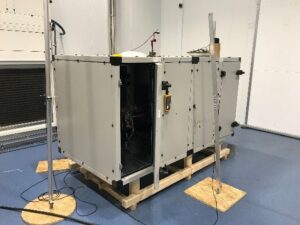
One might question how relevant this is in actual operation, since the areas of the casing that are exposed to large temperature differentials are generally small and the amount of time such conditions take place during a year is relatively reduced (colder/hotter months). This is why the specifics of the project and it’s environment must be taken into consideration when assessing if mitigating thermal transmittance is crucial to any project. We would also point out that if thermal transmittance is a factor to be considered, then it is equally important to consider any potential ductwork heat losses, which are much larger in proportion, but often overlooked.
Usually when we give advice, we would back it up by means of referring clients to formal independent guidelines, however as mentioned before, we are not aware of any recent authoritative UK guidelines on what casing classification is actually suitable depending on the operating and ambient conditions. The last document we have sourced within the UK was published in 1991!
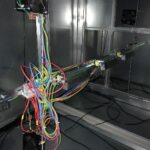
The best guidance we can find is from the German AHU Manufacturers Association which publishes a very detailed guideline for AHU’s including their suggested thermal classifications. Their recommendation is T5 for AHU’s without thermodynamic function (heating, cooling, hum/dehumidification) and T4 for AHU’s with thermodynamic function. Furthermore if the unit is external and has thermodynamic air treatment then T3 is recommended. We decided to put this to the test… you can read more on that later!
Thermal Bridging
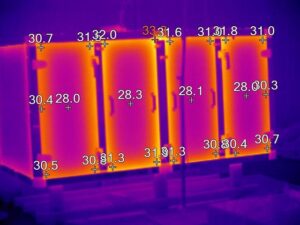
Thermal bridging measures the likeliness of condensation forming on the AHU casing. This is achieved by finding the portion of the casing where heat can flow most easily from outside to inside the unit, or vice versa, which is often at the joints of the AHU sections. When this happens, a very low temperature can manifest on the surface of the AHU creating potential for condensation, which on the long term can cause damage to the unit and act as a catalyst for both the growth of bacteria and other microorganisms leading to poorer IAQ. Thermal bridging is measured in a range from TB1 to TB5, where TB1 refers to the best performance .
As with thermal transmittance, the area of the casing affected by such temperatures is often relatively small and the risk of condensation is limited to zones usually downstream of the cooling coil if there is one.
Again in the absence of recent UK guidelines we referred to the German Manufacturers Association, who state if the AHU is cooling down below 7oC or taking in air at less than -7oC, then TB3 is recommended. When the temperatures are above this, then TB4 is recommended, thus demonstrating the need for TB2 often overstated.
Problematic
These two thermal classifications seem to be causing problems for manufacturers and buyers alike, as they are fast becoming the equivalent of magnolia in a wall paint specification! Whilst obviously crucial in some very specific settings, we are often told they are included as a catch all; there “just in case” or because “that is what everyone wants now” and as such we see them more and more with little justification behind them. T2 TB2 is a very expensive specification that precludes many suppliers from being able to quote competitively, vastly reducing the options available to a buyer and quite often isn’t necessary given the ambient and operating conditions of the unit.
Sweat Testing
To allow us to further understand the thermal bridging performance of our units, we decided to run our own tests. Using our state of the art research and development facilities in Leeds, we were able to test different AHU constructions – T4/TB4 and T2/TB2 – to check at what point condensation occurs under real operating conditions.
The test was conducted in a temperature and humidity controlled room, using a specialist AHU to control the air supply through the casing. Every test was carried out for at least 30 minutes. If at the end of a 30 minute test, no condensation was registered, the temperature differential between the airflow and the ambient was increased and the test was run again.
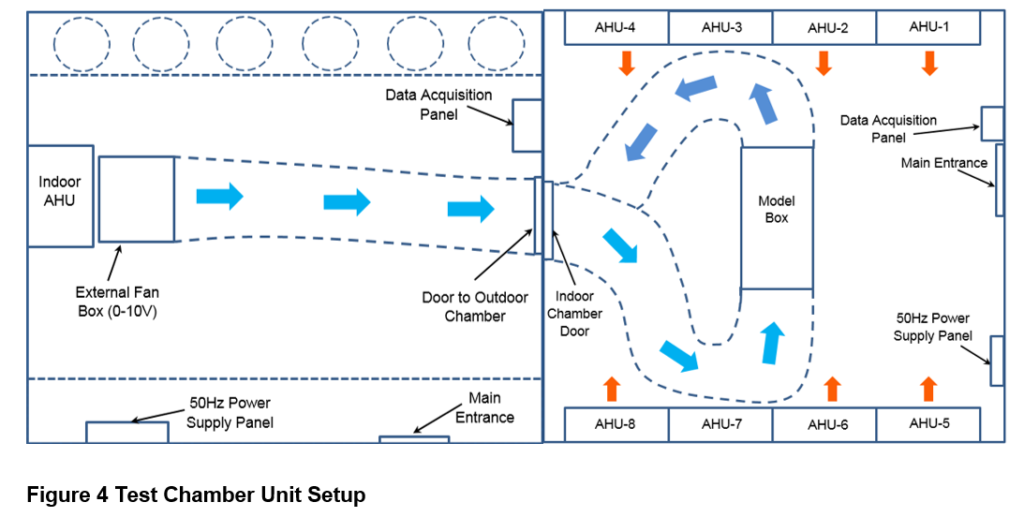
Our findings demonstrated that under typical indoor conditions (25oC, 55% RH) condensation did not happen on our T4/TB4 construction until the air inside the casing was below 7oC (18K dT). With our T2/TB2 construction, condensation appeared at 20K dT, with an internal temperature of nearly 5 degrees, meaning that its performance was really only effective for another two degrees or so.
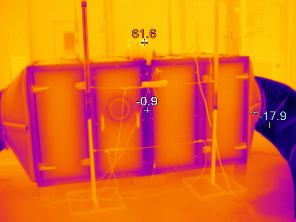
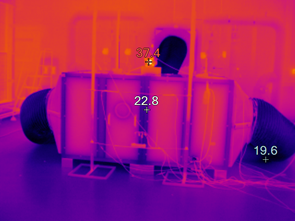
On our external location test at typical conditions (28oC, 50% RH) the T4/TB4 construction did not see condensation until the internal temperature was below 8oC (20K dT). Again the test on the T2/TB2 casing demonstrated that it was only really effective for an additional 2 to 3 degrees, requiring an adjustment of the ambient conditions to 29oC and 50% RH with an internal temperature of 6oC (23K dT) for condensation to appear.
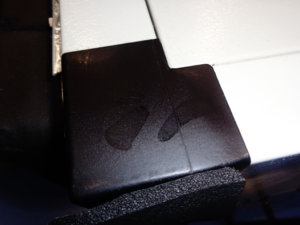
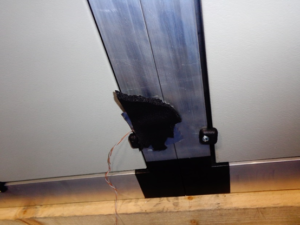
It should be noted that the point at which we stated condensation occurred was simply when we were able to see a tiny amount of condensation forming in the coldest zones in the casing at naked eye. It is likely this would simply evaporate to the ambient under real operating conditions on site. It would likely take a long time operating at more extreme temperature conditions to actually see condensation in amounts that might be problematic.
Whilst we appreciate the results from the above tests are subject to the test engineer’s perception and to variations between each test, we think these were sufficiently accurate to replicate in-situ operation, more so that they support what is suggested by the German Association’s guidelines.
Based on the above test results we’ve developed an analytic tool which offers a fair indication of how likely a certain casing is to allow condensation on its surfaces based on the internal air minimum temperature and the ambient air conditions. Although impossible to be 100% accurate, it provides a good estimate of the level of protection required based real operating conditions.
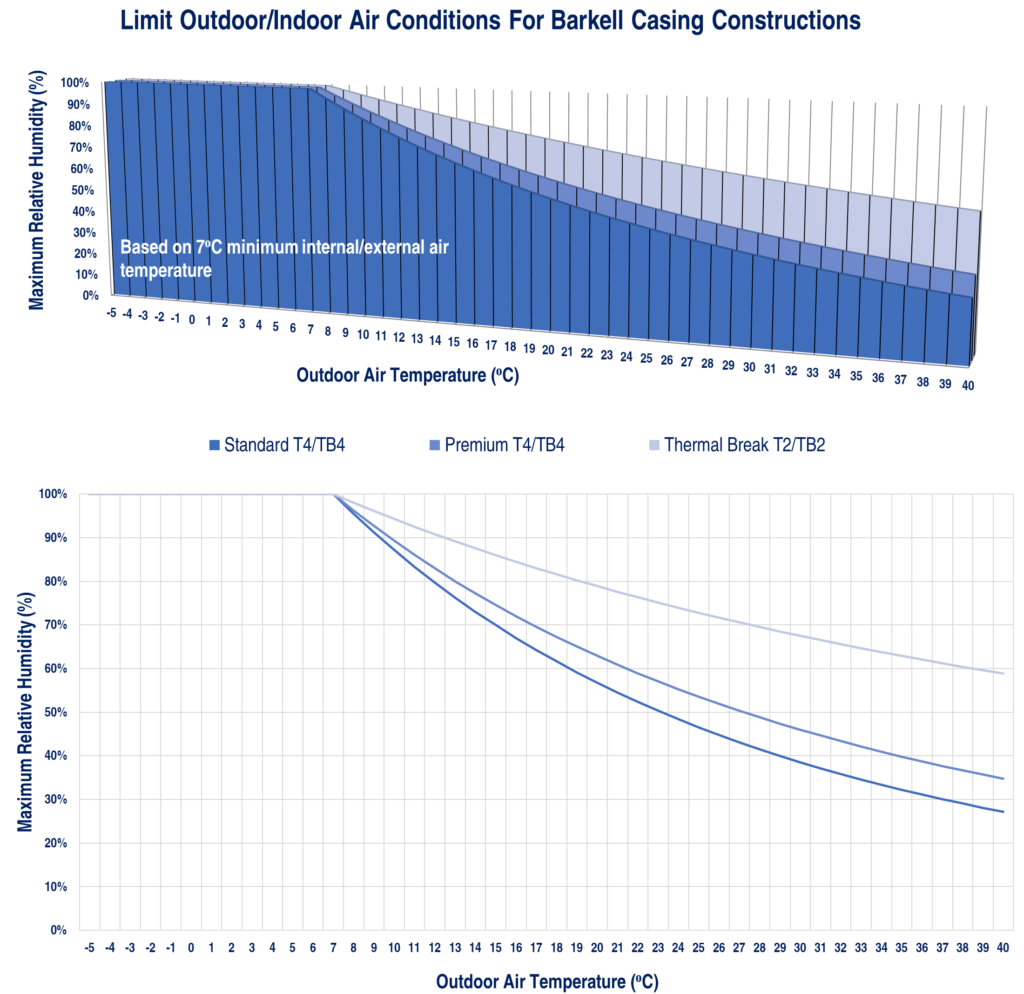
Conclusion
Before we totally dismiss the thermal bridge and thermal transmittance rating, it’s fair to say it absolutely does have its place on some projects, for example those with a significant temperature differential between the ambient and the internal air. However, many projects do not have this requirement and whilst such a high specification is a marketeers dream, it is a bit of a case of using a sledgehammer to crack a nut in some situations. Or buying a limousine to do the school run. Or buying a real diamond tiara for your 3 year old’s dressing up box. Or….well, you get the idea. All would work fine on the job in hand, but are massively overpriced, not easy to source and most importantly, not at all necessary.
The reality is that most UK projects will be adequately serviced with an AHU with a T4/TB4 to T3/TB3 rating.
As the world becomes more technologically advanced, it is also really important we don’t become too blinded by the marketing of standards and manufacturing techniques that have been developed for specific environments or situations. Common sense has to prevail, options need to remain open in order for fair trade to take place and it is really important that choices remain available to the specifier and to the buyer.
As one very experienced specifier told me, “I specify according to the requirements of the project, not the requirements of the manufacturer.”
And so to answer our opening question of to be or not to be, in our experienced opinion, T2/ TB2 is not always ‘to be’. In fact it rarely is to be. Our advice to specifiers would be for them to speak with a range of manufacturers to assist with getting the most appropriate, cost effective and timely solution that is tailored to their project requirements. And most importantly, to have faith in their own knowledge, knowing T2/ TB2 is not always the one.


